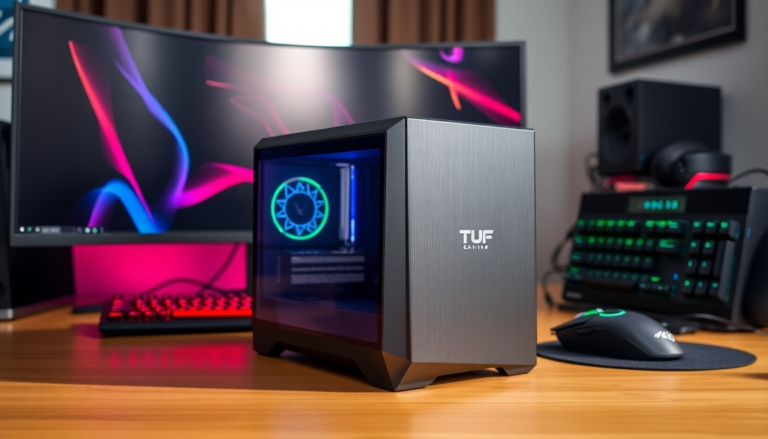Argomenti trattati
In the fast-evolving world of technology, the demand for compact yet powerful gaming solutions is at an all-time high. Enter the Asus TUF Gaming T500, a machine that dares to blend desktop performance with the miniaturization trend. But can it really deliver on the promise of gaming excellence without the typical compromises associated with mini PCs? Let’s dive deep into what makes this machine tick—or perhaps what hinders it from truly soaring.
Design and build quality
At first glance, the TUF Gaming T500 presents itself as a striking yet unassuming desktop tower. Sporting a transparent side panel, it allows users to gaze upon its internal components, a feature that many gamers adore. However, the real intrigue lies in its compact design that houses an RTX 5060 Ti graphics card. But wait, look above that GPU, and you’ll find an almost comically small cooling solution perched atop an Intel 13th-gen i5 or i7 processor (depending on your purchase choice). This isn’t just any processor; it’s a laptop-grade chip soldered onto a proprietary motherboard—a bold move by Asus, to say the least.
Performance: What to expect
Now, one might wonder, how does a laptop processor fare in the realm of desktop gaming? The answer is complicated. While the integration of components offers a streamlined design and decent upgrade potential, the limitations of a soldered CPU raise eyebrows. For gamers looking for flexibility, this isn’t the best option. However, Asus has provided pathways for upgrades, including a desktop-style PCIe slot for graphics cards, two DDR5 SO-DIMM slots for memory, and M.2 Gen 4 slots for storage. That’s a refreshing touch, especially in a landscape where mini PCs often skimp on expansion capabilities.
Cooling efficiency and thermal management
One of the standout features of the TUF Gaming T500 is its cooling system. The added space in this compact tower allows for enhanced airflow compared to traditional laptops or mini PCs. The rear exhaust fan works in tandem with the tiny cooling unit on the CPU to manage temperatures effectively. This efficient thermal management is crucial, especially during intense gaming sessions when heat can become a significant issue. I remember when I was gaming on a cramped setup—heat was always a concern, affecting performance. With the T500, that worry seems significantly reduced.
Price point and value proposition
However, the TUF Gaming T500 enters the market with a starting price of around $1300. That’s where the skepticism creeps in, as it positions itself firmly in the mid-range category against pre-built gaming desktops that often offer more power for less money. A quick glance at PCPartPicker reveals that for the same budget, you could assemble a more robust machine—complete with an upgradeable 13th-gen Core i5 and potentially more powerful graphics. The math just doesn’t add up for the value-conscious gamer.
Who is this for?
So, who is the TUF Gaming T500 really for? As I wandered through the crowded halls of Computex, I couldn’t help but overhear conversations buzzing around this new machine. It seems there’s a segment of gamers—those who prioritize aesthetics and compactness over raw performance—that might find this desktop appealing. Indeed, many users may simply want to game without delving into the complexities of custom builds or high-end specs. Yet, I believe that unless Asus addresses the value concern, this machine may struggle to win the hearts of hardcore gamers.
Final thoughts
In the end, the Asus TUF Gaming T500 is a fascinating blend of design and functionality, but it comes with caveats. While it boasts a solid build and decent upgrade options, the reliance on a laptop-grade CPU and a higher price point could deter many potential buyers. Personally, I think the gaming community deserves better options that don’t compromise on power or flexibility. As technology continues to advance, perhaps we’ll see a future version that truly meets the expectations of dedicated gamers. Until then, the T500 might just be another pretty face in a sea of gaming desktops.

